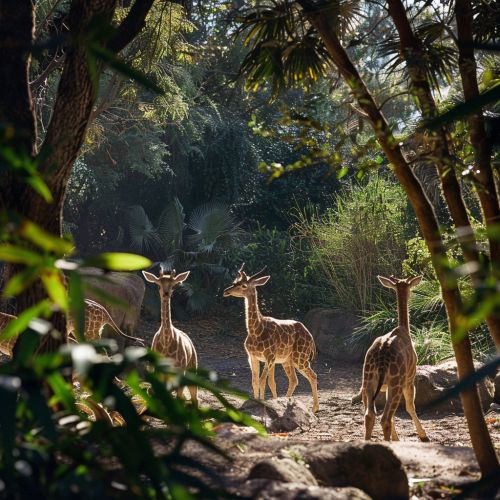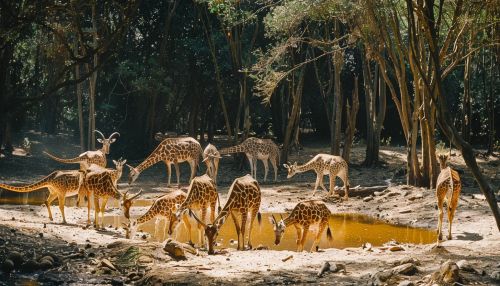Perissodactyla
Taxonomy and Evolution
Perissodactyla, also known as odd-toed ungulates, is an order of mammals characterized by an odd number of toes on the hind feet and a stomach that is not complex. The name "Perissodactyla" is derived from the Ancient Greek words "perissós" meaning "odd" and "dáktylos" meaning "finger, toe". This order is contrasted with the even-toed ungulates which have an even number of toes on the hind feet and a complex stomach.


Perissodactyls are further divided into three extant families: Equidae (horses and their kin), Tapiridae (tapirs), and Rhinocerotidae (rhinoceroses). The extinct families of the Perissodactyla include Chalicotheriidae, the desmostylians, and several others.
The evolution of the Perissodactyla has been a subject of much debate. The earliest fossils of the Perissodactyla date back to the early Eocene, about 56 million years ago. These early Perissodactyls were small, forest-dwelling animals similar to today's tapirs. Over time, they evolved into a diverse group of animals that includes the modern horses, rhinoceroses, and tapirs, as well as a number of extinct families.
Anatomy and Physiology
Perissodactyls are large to very large mammals, ranging in size from the small tapirs, which can weigh as little as 150 kilograms, to the large rhinoceroses, which can weigh up to 4,000 kilograms. They are characterized by a robust and heavy build, a large skull, and a long, flexible snout. The limbs are long and strong, adapted for running or for moving in difficult terrain. The feet are unique among mammals in that the weight of the body is borne on the third digit, which is particularly large and strong.
The digestive system of the Perissodactyls is less complex than that of the ruminants. They are hindgut fermenters, meaning that fermentation of plant material takes place in the large intestine or caecum. This allows them to extract nutrients from plant material, but less efficiently than the ruminants. As a result, they need to consume larger quantities of food.
Behavior and Ecology
Perissodactyls are herbivorous, feeding on a variety of plant material. Some species, like the horse, are grazers, feeding mainly on grasses. Others, like the tapir and the rhinoceros, are browsers, feeding on leaves, shoots, and fruits.
Most Perissodactyls are solitary animals, but some, like the horse, are highly social and live in groups. They are generally diurnal, but some species are nocturnal or crepuscular. They have a range of vocalizations, from the whinnying of the horse to the low, resonant calls of the rhinoceros.
Perissodactyls are found in a variety of habitats, from grasslands and deserts to forests and swamps. They are native to Asia, Africa, and the Americas, but have been introduced to other parts of the world by humans.
Conservation
Many species of Perissodactyls are threatened or endangered. The main threats to their survival are habitat loss, poaching, and competition with livestock. Conservation efforts are underway to protect these species and their habitats, but the challenges are significant.
